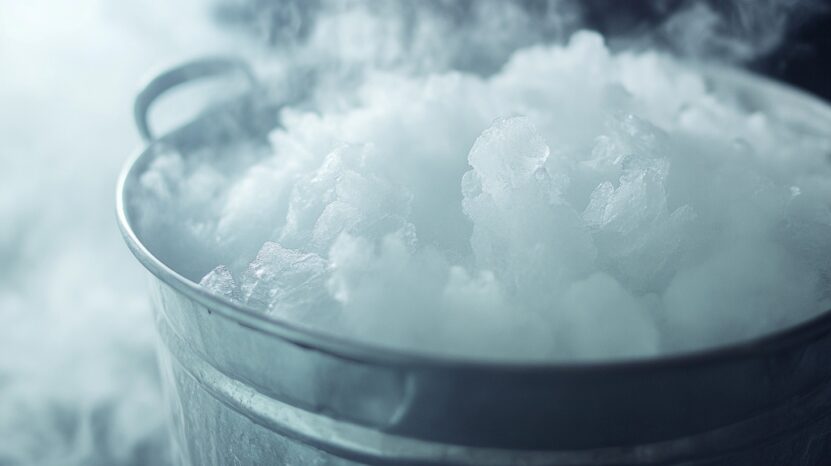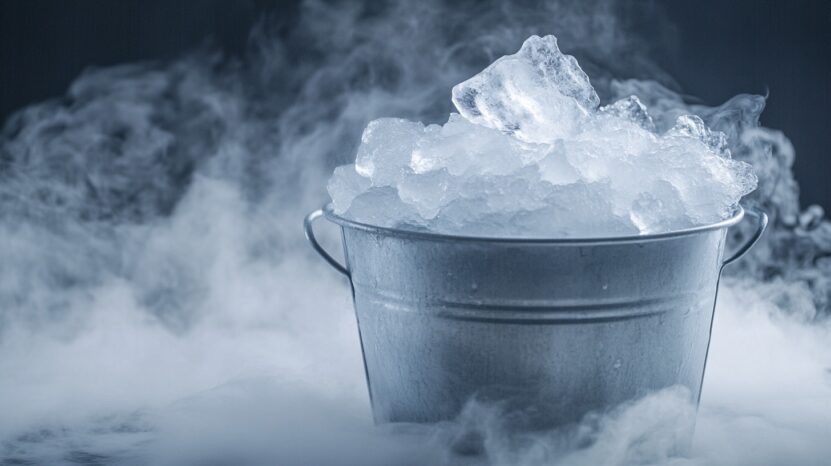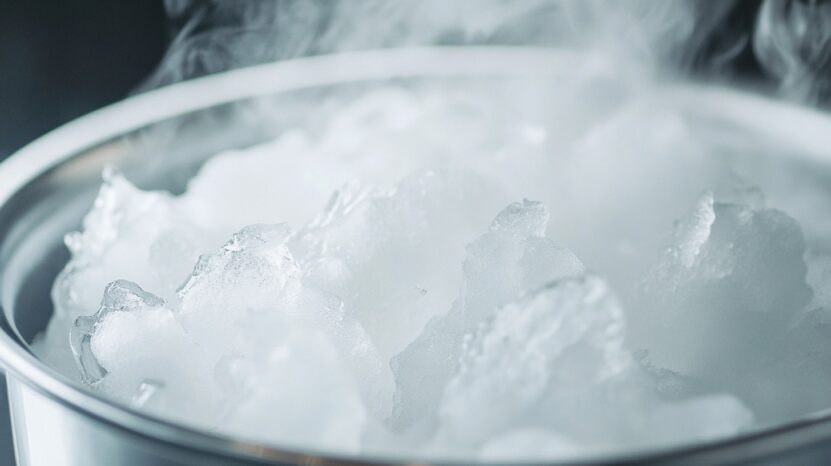
Share Post:
Dry ice is a captivating substance that captures our imagination with its unique properties. Composed of frozen carbon dioxide, it is unlike any other form of ice we encounter.
By the end, you’ll have a firm understanding of how long dry ice lasts and how to make the most of it in various scenarios.
Let us talk about each of these steps in greater detail.
What Does the Science Say?
Solid carbon dioxide (CO2) is an interesting material that behaves quite differently from regular ice. Instead of melting into a liquid, it undergoes sublimation, a process where it shifts directly from a solid to a gas.
This explains why, when exposed to warmer temperatures, it doesn’t form a puddle but instead releases CO2 gas, creating the foggy effect commonly seen in special effects and science demonstrations.
This characteristic makes it an extremely effective cooling agent. With a freezing point of -78.5°C (-109.3°F), it’s much colder than typical ice, allowing it to keep items frozen for extended periods.
It’s frequently used for shipping frozen goods, creating dramatic fog effects, and even in industrial cleaning methods like CO2 blasting.
Factors That Affect Sublimation
- Temperature: Cooler environments slow down the sublimation process, while warmer conditions speed it up, causing the solid to vaporize faster.
- Packaging: Storing it in insulated containers slows sublimation by reducing exposure to warm air.
- Surface Area: The more surface area exposed to air, the quicker the transition from solid to gas.
- Airflow: Increased airflow accelerates the gas release. In a windy or open space, sublimation happens more quickly, while closed areas help slow it down.
Because of these unique properties, CO2 solid is a go-to for creating fog effects and keeping things cold without leaving any liquid behind.
Shelf Life of Dry Ice
Dry ice doesn’t last as long as regular ice. Typically, it lasts about 24 to 48 hours, depending on a few things. The main factor is temperature, if it’s warmer, the ice will turn into gas faster, shortening how long it lasts.
To make it last longer, proper storage is important. Keep it in a well-insulated cooler or container to reduce exposure to heat.
Don’t use airtight containers, as the gas buildup could create too much pressure inside.
Extending Its Lifespan
You can make dry ice last longer by insulating it. Wrapping it in a newspaper or adding a layer of Styrofoam helps slow down the process of turning it into gas.
It is especially useful when transporting food or during long events where you need things to stay cool.
Using coolers or insulated containers is another great way to keep it cold for longer.
These are perfect for camping trips, picnics, or any situation where you need to keep items chilled for an extended time.
When shipping items that need to stay cold, like food or medical supplies, proper insulation is key.
Well-packaged items in insulated boxes can help maintain the right temperature, ensuring everything arrives in good condition.
Using Dry Ice for Special Occasions
Dry ice isn’t just for science or industry, it can also add a magical touch to special events.
One fun way to use it is to create a spooky fog. When placed in warm water, the solid turns into thick fog, making any room feel mysterious.
Just be sure to handle it safely by using gloves or tongs, and keep the area well-ventilated.
You can also use it to cool drinks while making them look cool, too. Put it in water with your drinks, and they’ll have a smoky, frosty appearance.
Just remember to be careful – never touch it directly with your hands.
- Halloween parties for spooky fog
- Theatrical performances or plays for dramatic effects
- Weddings or formal events to create a magical ambiance
- Parties where you want to chill drinks with a visual twist
Did you know: You can put dry ice in your blender while making a cold drink without any worries about the blender getting broken?
Disposal of Dry Ice
After using dry ice, it’s important to dispose of it safely. Unlike regular ice, it doesn’t melt into water but turns into gas, so you need to handle it carefully.
The best way to get rid of it is to let it turn into gas in a well-ventilated area. You can place it in a container or leave it in an open space where it can evaporate naturally.
Never put it in sinks, toilets, or other closed spaces because the gas can build up and cause pressure.
When disposing of dry ice, safety is key. Always wear gloves or use tongs to avoid frostbite, as the ice is extremely cold.
Also, make sure the area is well-ventilated so that the carbon dioxide gas doesn’t collect in one spot.
If you’re concerned about the environment, some companies offer recycling services where they collect and reuse leftover dry ice for other purposes.
The Bottom Line
Dry ice is a cool material with special qualities that can spark our curiosity. Knowing how long it lasts and how to handle it safely is important for getting the most out of it.
We’ve covered its science, shelf life, storage tips, and many uses.
Now that you understand its versatility, you can explore all the exciting ways to use it. With this guide, you’re ready to safely and effectively enjoy its benefits.
Related Posts:











